Grapes are a versatile fruit used for various purposes, including winemaking, juice production, and table consumption. The timing of grape harvest plays a crucial role in determining the quality and flavor profile of the final product. This article delves into the optimal timing for grape harvest, the factors influencing harvest time, signs of grape ripeness, determining grape maturity, sugar and acidity levels, flavor development, weather considerations, harvesting for specific wine styles, and post-harvest handling.
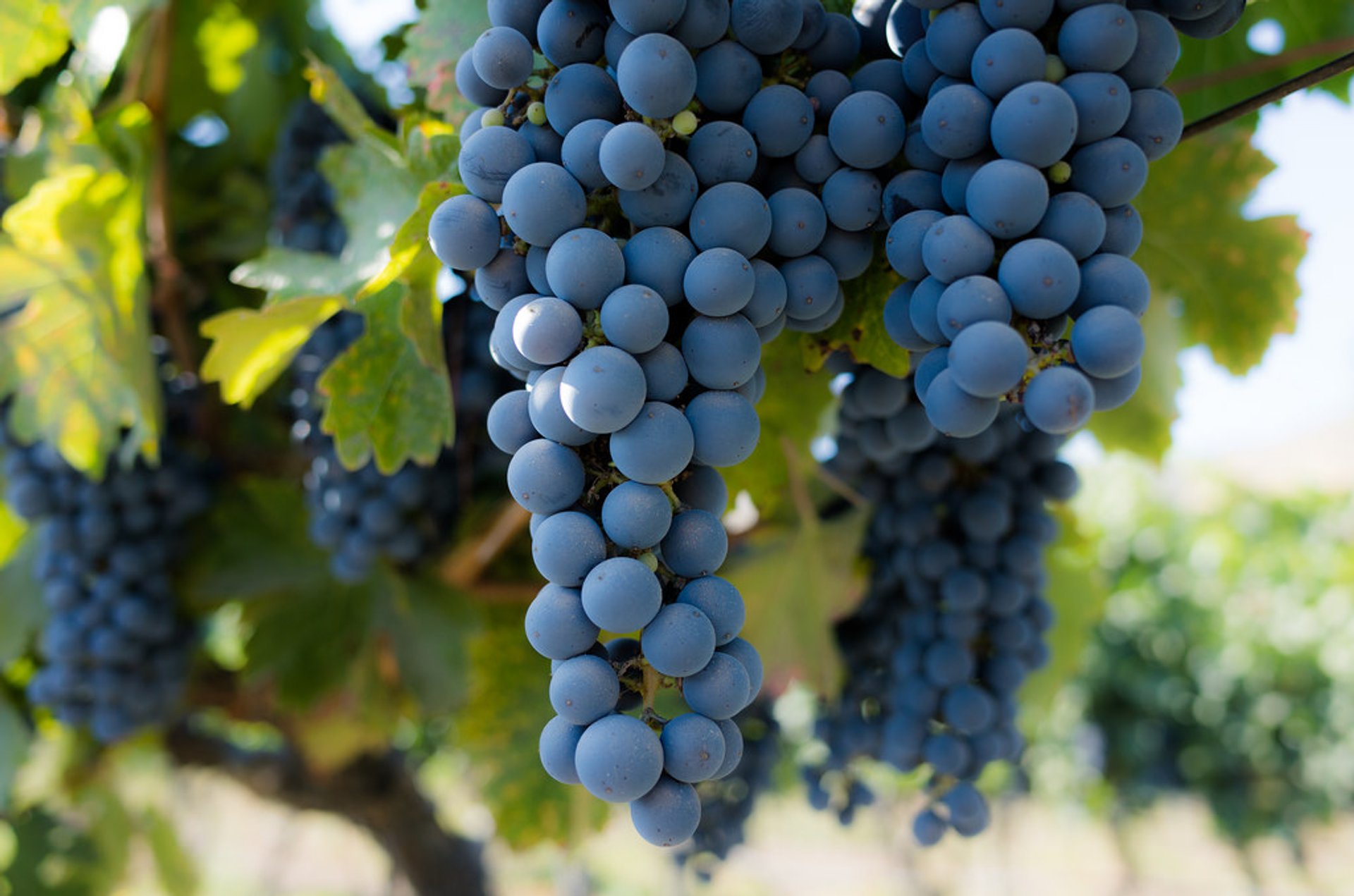
Optimal Timing for Grape Harvest
The optimal timing for grape harvest depends on several factors, including the grape variety, intended use (wine, juice, or table grapes), and regional climate. Generally, grapes are harvested when they reach their peak ripeness, balancing sugar content, acidity, and flavor development.
Ripening Factors and Their Effects
Grapes undergo physiological changes during the ripening process that contribute to their quality. Some key factors influencing grape ripening include temperature, sunlight exposure, soil conditions, vineyard management practices, and grape variety.
Signs of Grape Ripeness for Harvesting
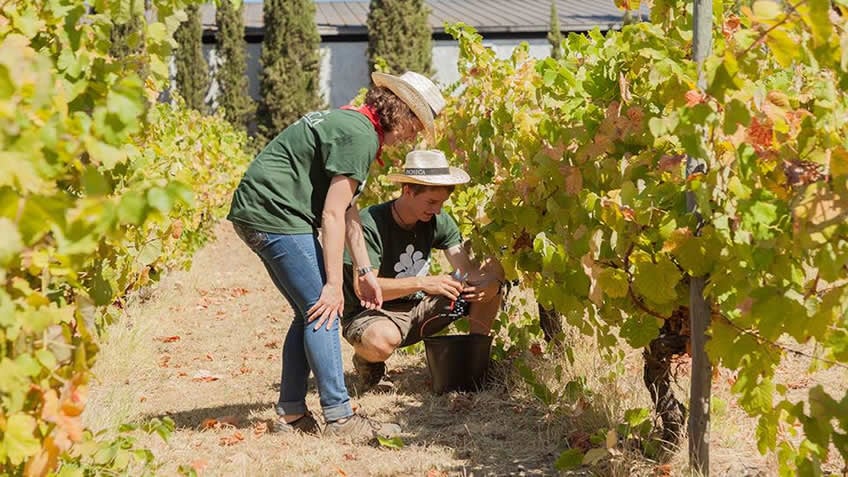
To determine the readiness of grapes for harvest, it is essential to look for specific signs of ripeness. These signs vary depending on the grape variety but generally include color change, texture, aroma, and taste.
Color Change
Color transformation is one of the most apparent indicators of grape ripeness. For red grape varieties, such as Cabernet Sauvignon, the grapes turn from green to deep purple or black when ripe. In contrast, white grape varieties, like Chardonnay, exhibit a shift from green to yellow or golden hues.
Texture
Ripe grapes should have a slightly soft texture without being mushy. Gentle pressure on the grape should result in a slight “give” rather than a firm resistance.
Aroma
The aroma of ripe grapes intensifies as they approach harvest time. Sniffing the clusters can provide clues about their maturity. For instance, some grape varieties develop floral, fruity, or spicy aromas when fully ripe.
Taste
Tasting the grapes is perhaps the most reliable method to assess their ripeness. Ripe grapes generally exhibit a balanced flavor profile, with a harmonious blend of sweetness and acidity. The taste should be pleasant and free from unripe or green flavors.
Determining Grape Maturity for Harvest
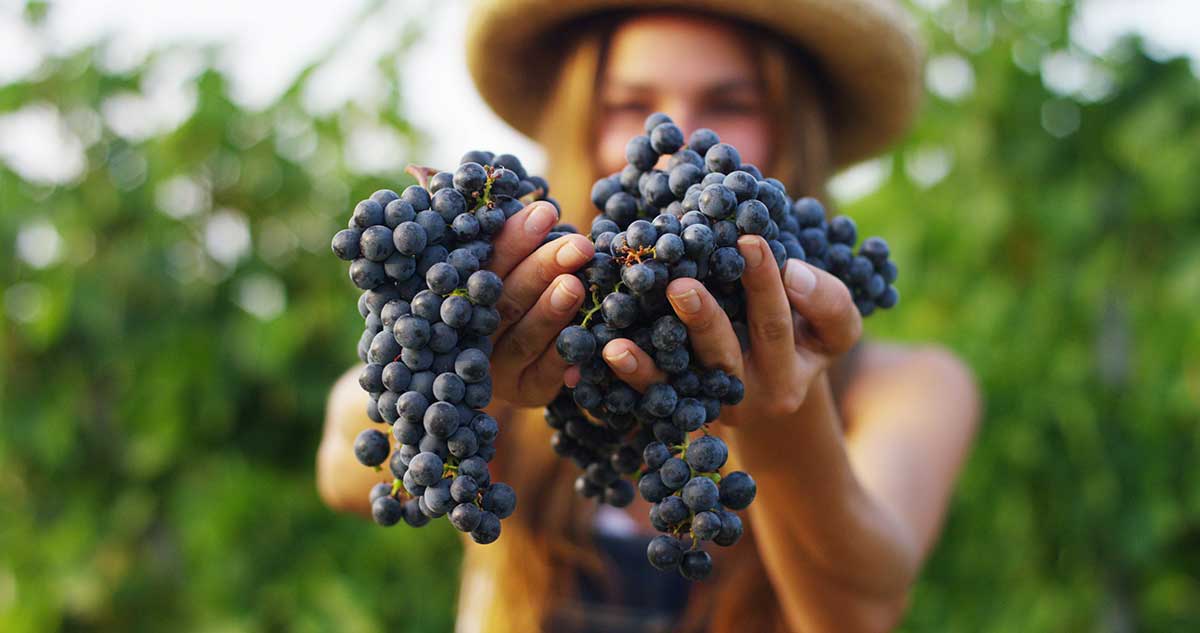
In addition to visual and sensory cues, several methods are available to determine grape maturity accurately. These methods aid in making informed decisions about the optimal timing for harvest.
Brix Measurement
Brix is a unit of measurement that quantifies the sugar content in grapes. Using a refractometer or a hydrometer, winemakers and viticulturists can measure the grape juice’s sugar concentration by assessing its density. Typically, grapes harvested for winemaking have a brix level between 22 and 26 for red varieties and 20 and 24 for white varieties.
pH Level
pH is an essential parameter used to evaluate grape acidity. As grapes ripen, their acid levels decrease, leading to an increase in pH. The ideal pH range for grapes destined for winemaking purposes typically falls between 3.1 and 3.6.
Titratable Acidity (TA)
Titratable acidity measures the total amount of acids present in the grape juice. It is expressed as grams per liter of tartaric acid. Grapes with lower TA values tend to have a milder taste, while higher TA values contribute to a more vibrant and acidic flavor profile.
Harvesting Grapes at the Right Sugar Level
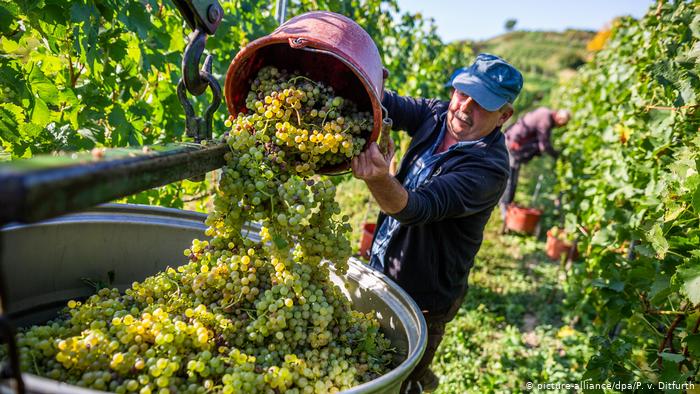
Sugar content is a crucial aspect of grape ripeness and greatly impacts the final product’s quality, especially in winemaking. The sugar level directly affects alcohol fermentation and the resulting wine’s sweetness or dryness.
Sugar Ripeness Levels
Different grape varieties have varying optimal sugar levels for harvest, depending on the desired wine style. For example, grapes intended for sparkling wines are harvested at lower sugar levels compared to those for late-harvest or dessert wines.
Potential Alcohol
The sugar content of grapes can be used to estimate the potential alcohol level that can be achieved during fermentation. Winemakers calculate this value by multiplying the brix reading by 0.55.
When to Pick Grapes Based on Acidity
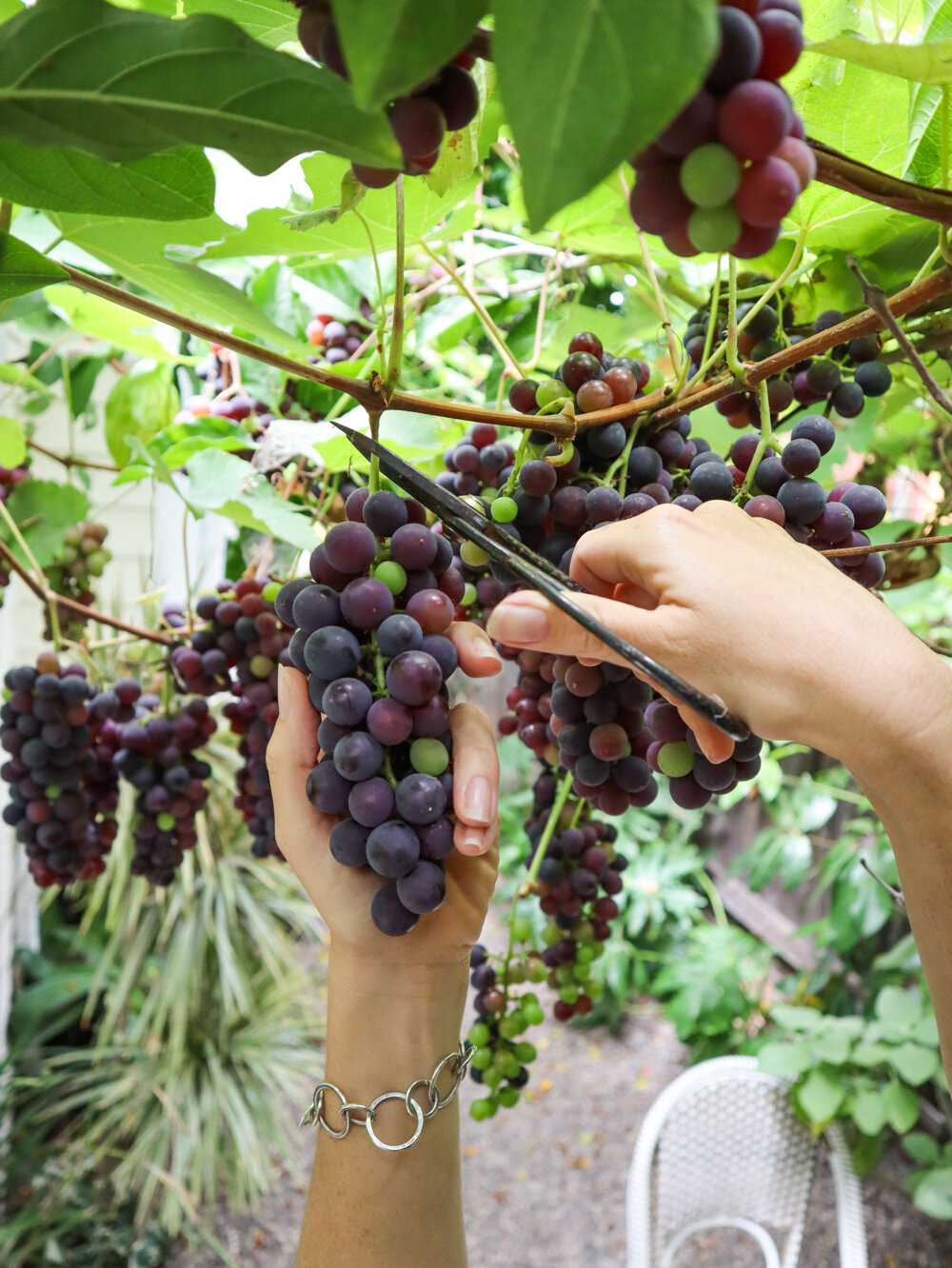
Acidity is another critical component indetermining grape harvest timing, as it contributes to the overall balance and structure of the resulting wine or other grape products. The acidity level in grapes can vary depending on the grape variety and growing conditions.
Acid Ripeness Levels
As grapes ripen, their acidity decreases, and the flavors become more harmonious. However, it is essential to consider the desired acidity level based on the intended use. For example, grapes used for crisp white wines may require higher acidity levels compared to those used for red wines or sweeter styles.
Tartaric Acid
Tartaric acid is the primary acid found in grapes and plays a significant role in determining acidity levels. Monitoring the tartaric acid content in grapes can provide insights into their readiness for harvest. The ideal tartaric acid range varies depending on the grape variety but generally falls between 4 and 8 grams per liter.
pH and Total Acidity Balance
The balance between pH and total acidity is crucial for grape harvest decisions. While pH signifies the intensity of acidity, total acidity represents the concentration of all acids present in the grape juice. A balanced pH and total acidity contribute to a pleasant taste and overall quality in the final product.
Monitoring Grape Flavor Development for Harvest
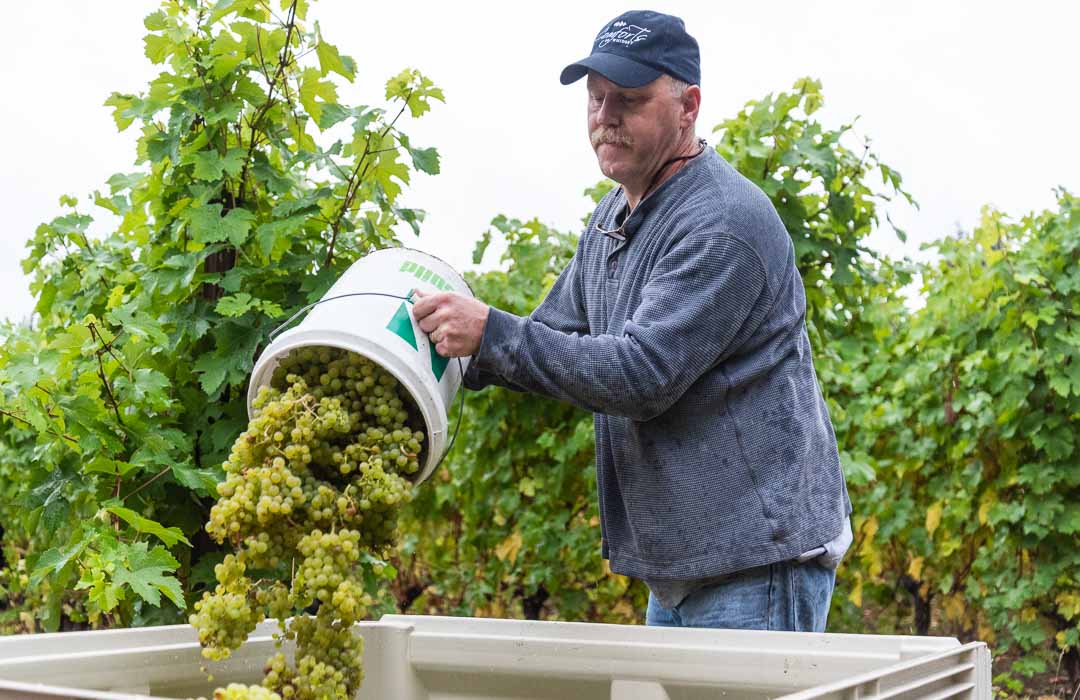
Flavor development is an important aspect of grape maturity and directly impacts the sensory characteristics of the resulting products. The flavor profile of grapes evolves during ripening, and monitoring this progression can help determine the optimal timing for harvest.
Phenolic Compounds
Phenolic compounds, such as tannins, anthocyanins, and flavonoids, contribute to the color, aroma, and mouthfeel of grapes and wines. These compounds undergo changes as grapes ripen, influencing the complexity and structure of the final product. For red grape varieties, the gradual development of phenolic compounds is particularly important in achieving desirable color and tannin extraction during fermentation.
Aroma and Flavor Components
As grapes mature, they develop a wider range of aromatic compounds, including esters, terpenes, and thiols. These compounds contribute to fruity, floral, and spicy aromas, enhancing the overall flavor complexity. Tasting the grapes periodically can help assess the evolution of these flavor components.
Weather Considerations for Grape Harvest
Weather conditions significantly influence grape ripening and, consequently, the optimal timing for harvest. Temperature, rainfall, humidity, and sunlight exposure all play crucial roles in determining grape quality.
Temperature
Temperature affects grape development, sugar accumulation, acidity reduction, and flavor formation. Warmer regions tend to have an earlier harvest, while cooler regions experience a delayed harvest. Extreme temperatures, both hot and cold, can negatively impact grape quality, emphasizing the need for favorable weather conditions during the ripening period.
Rainfall and Humidity
Excessive rainfall and high humidity levels can lead to increased disease pressure, such as molds and mildews. Moisture on the grape clusters can cause rot and spoilage, compromising their quality. Monitoring weather patterns and considering short-term forecasts are essential when deciding the harvest timing to avoid unfavorable conditions.
Sunlight Exposure
Sunlight is vital for photosynthesis and grape ripening. Sufficient sunlight exposure ensures proper sugar accumulation, color development, and flavor maturation. Shading from excessive foliage or extended periods of cloud cover can delay ripening and affect grape quality.
Harvesting Grapes for Specific Wine Styles
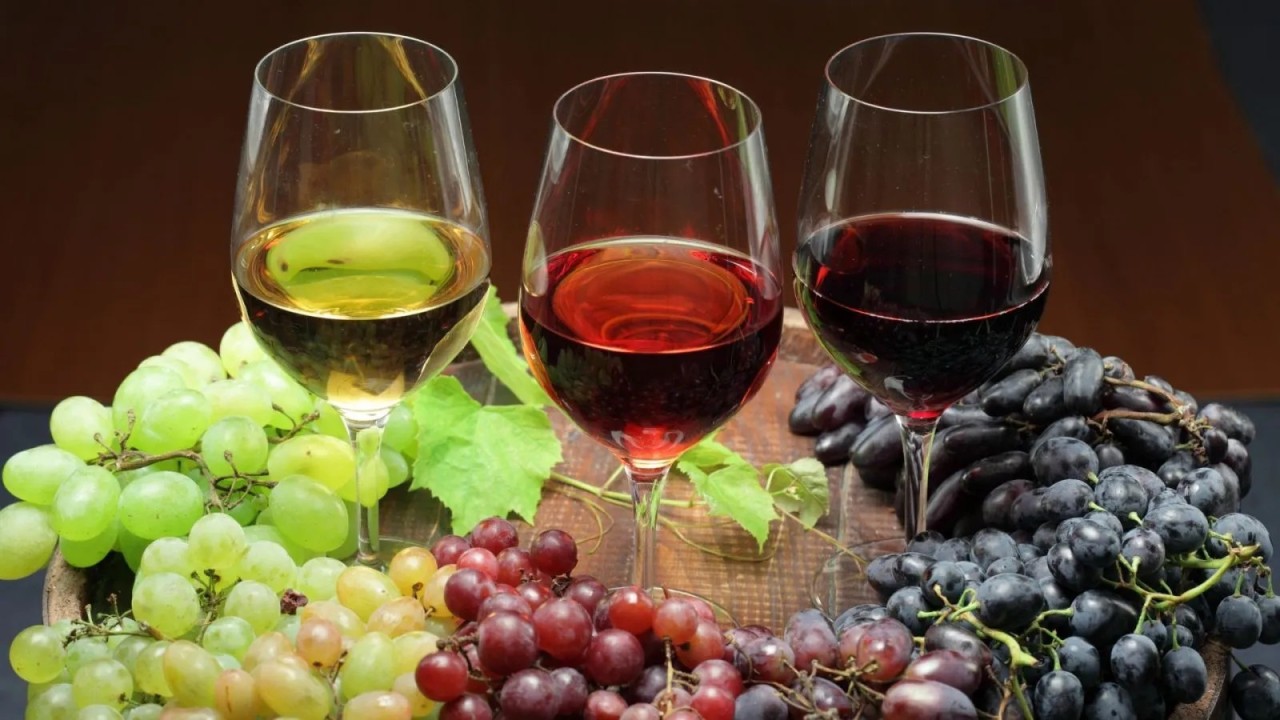
Different wine styles require grapes harvested at specific maturity levels to achieve the desired characteristics. Vineyard managers and winemakers make harvest decisions based on the intended wine style and the flavor profile they aim to create.
Sparkling Wines
Grapes for sparkling wines, such as Champagne or Prosecco, are often harvested earlier when they have lower sugar levels and higher acidity. This early harvest preserves the crispness and freshness needed for these styles, which undergo additional fermentation to create bubbles.
White Wines
White wines generally require grapes with balanced sugar and acidity levels. The desired flavor profile can vary depending on the variety and winemaker preferences. Some white wines, like Sauvignon Blanc, may benefit from slightly higher acidity, while others, like Chardonnay, may require riper fruit with softer acidity.
Rosé Wines
For rosé wines, the grapes are typically harvested earlier than those used for red wines but later than those for sparkling or white wines. This timing allows for a shorter period of skin contact during fermentation, resulting in the characteristic pink color and delicate flavors.
Red Wines
Red wines benefit from fully ripe grapes with optimal color, flavor, and tannin development. The grapes are harvested when they reach their peak ripeness, with balanced sugar and acidity levels. The specific flavor profile desired for the red wine style will dictate the ideal timing for harvest. For example, grapes intended for light-bodied red wines may be harvested earlier to maintain bright fruit flavors, while those for full-bodied reds may be left on the vines longer to develop richer, complex flavors.
Post-Harvest Handling of Grapes
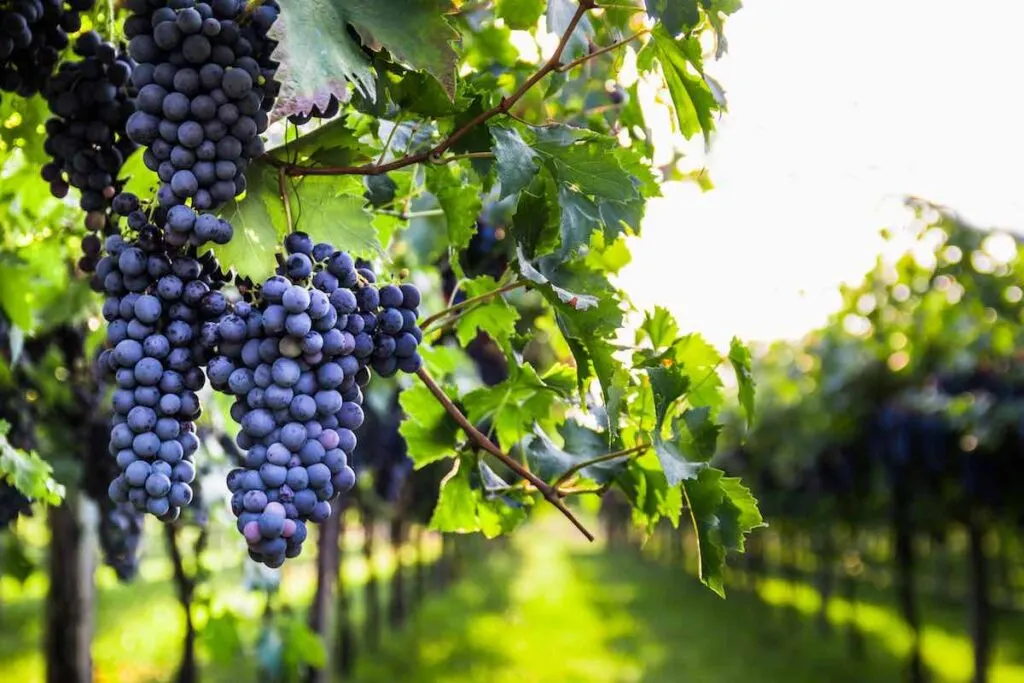
After harvest, proper handling and processing of grapes are crucial to preserve their quality and prevent spoilage. The following steps ensure that the grapes remain in optimal condition until further processing or consumption.
Sorting and Destemming
Upon arrival at the winery or processing facility, grapes are carefully sorted to remove any damaged or unripe berries, as well as leaves and other debris. Depending on the winemaking process, the grapes may also go through destemming, where the stems are removed from the clusters.
Crushing or Pressing
For winemaking, grapes are typically crushed to release the juice and initiate fermentation. In some cases, such as white wine production, the grapes may undergo pressing instead of crushing to separate the juice from the skins and seeds.
Fermentation or Processing
Following crushing or pressing, the grapes’ juice is fermented using selected yeast strains to convert the sugars into alcohol. The fermentation process varies depending on the intended wine style and winemaker preferences. Some wines may undergo malolactic fermentation or further processing, such as aging in oak barrels.
Storage and Preservation
Proper storage conditions are essential to maintain grape quality. Grapes should be stored at cool temperatures to prevent spoilage and fermentation before processing. Additionally, oxygen exposure should be minimized to avoid oxidation of the juice or wine.
Conclusion
Knowing when to harvest grapes is crucial for achieving optimal flavor, sugar, and acidity levels for various grape products like wine, juice, and table grapes. Factors such as ripeness signs, grape maturity, sugar and acidity levels, flavor development, weather conditions, and intended wine style all play key roles in determining the ideal timing for harvest. By considering these factors and implementing proper post-harvest handling techniques, vineyard managers and winemakers can ensure the highest quality grape products.

